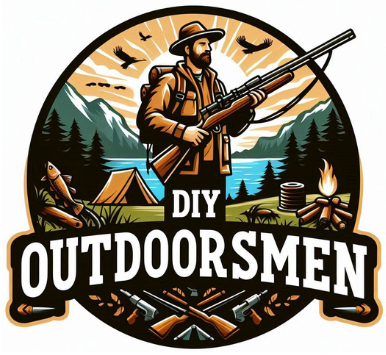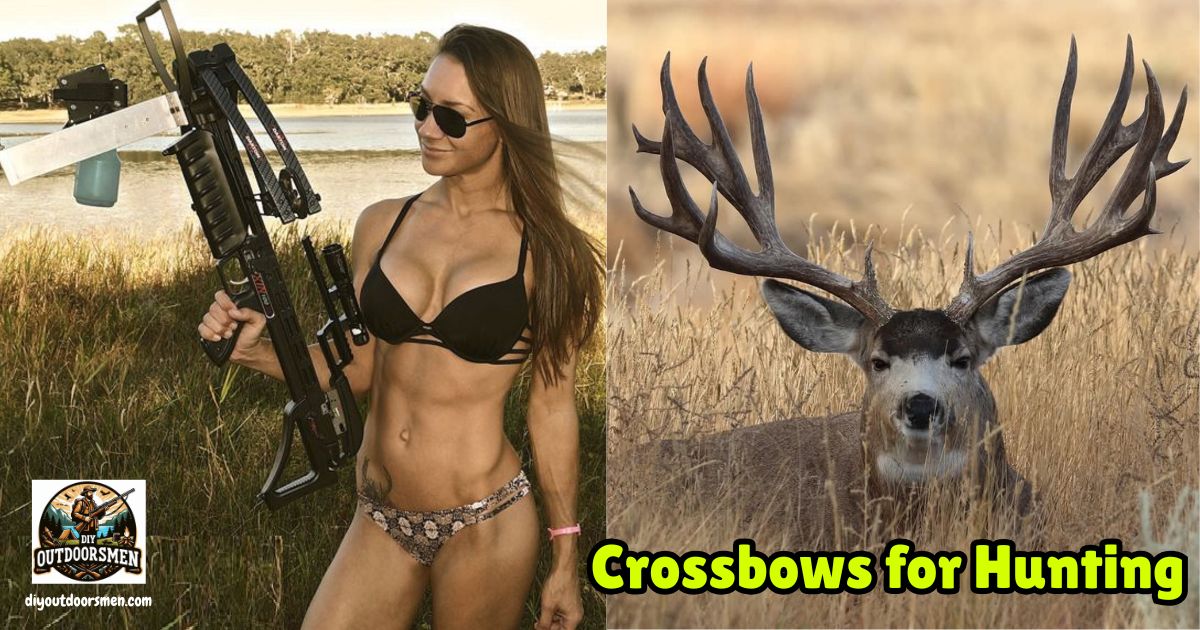Contents
- 1 Choosing a Crossbow for Hunting
- 2 Effective Range and Shooting Fundamentals
- 3 Safety Essentials and Responsible Use
- 4 Crossbow Accessories That Make a Difference
- 5 Common Challenges and What to Watch For
- 6 Advanced Tips for Crossbow Hunters
- 7 Crossbow Hunting Applications and Examples
- 8 Frequently Asked Questions
- 9 Final Thoughts on Crossbows for Hunting
Using a crossbow for hunting offers a unique and practical choice for many hunters. I find the experience blends the thrill of archery with some of the convenience of firearms, making it an interesting option for both beginners and experienced hunters.
QUICK LOOK: Common Challenges with Crossbows for Hunting
- Weight and Portability: Carrying a heavier crossbow can get tiresome after a few miles. I either opt for lighter models or use a good sling to shoulder the load comfortably.
- Noise: Most crossbows make some noise on release. Adding limb dampeners or string silencers can help, especially when targeting skittish game. While these don’t make the shot silent, they can lower the chances of spooking an animal.
- Weather Conditions: Rain or damp weather may affect the string, limbs, and trigger. I pack a small dry cloth and check the mechanism before each hunt to avoid problems.
- Legal Restrictions: Hunting laws for crossbows can be different from those for rifles or conventional bows. I always double-check regulations for crossbow use in my state or hunting area.
Whether I’m out in the woods after deer or setting up in a blind for turkey, the right crossbow can make a real difference in both accuracy and hunting success. I’m here to share what I’ve learned about picking out, preparing, and safely using crossbows in the field—so let’s jump in and see what matters most for crossbow hunting.
Choosing a Crossbow for Hunting
Selecting a crossbow is a big step if you’re new to hunting or thinking about switching from conventional bows. I always take several features into account before deciding, since they can impact my time in the field.
Draw Weight and Speed: The draw weight is the amount of force required to pull back the string and ready the crossbow to fire. Heavier draw weights mean more power and higher bolt speed, which can help achieve ethical shots on big game. However, a model with an extremely high draw weight can be tougher to cock, especially on longer hunts. Many modern crossbows offer speeds above 300 feet per second, which is enough for most North American game. I aim for a balance—enough power for clean kills, but not so much that it’s uncomfortable to load or control.
Accuracy and Precision: Consistent accuracy is super important for humane hunting. I look for crossbows with a solid rail system and a clean, repeatable trigger pull. A good scope makes aiming far easier, especially in low light or with moving targets. According to Crossbow Magazine, choosing a model with a quality scope from the beginning helps improve overall confidence and results.
Size and Weight: I always think about how my crossbow’s size and weight fit my hunting style. Larger crossbows can be more stable to shoot, but they’re also harder to carry through thick brush or dense forest. Lighter models are easier to haul, but sometimes give up a bit of stability. A lot of newer designs fold down more compactly or feature synthetic stocks to shave off extra ounces, making longer walks in the field less of a headache.
Safety Features: Safety never takes a back seat for me. Anti-dry fire mechanisms keep you from accidentally firing the crossbow with no bolt in place, which could damage the crossbow or even cause an injury. Automatic safeties that engage on cocking also give me more peace of mind. These features are highly recommended by sources like Battlbox.com.
Effective Range and Shooting Fundamentals
Knowing your crossbow’s effective range and practicing regularly are two things that, in my experience, lead to more ethical and successful hunts. The best crossbow in the world won’t do much if I don’t know how to use it well under real conditions.
Effective Range: Most modern crossbows handle controlled shots at 30 to 50 yards, though some can stretch out to 70 yards. I stick with a distance where I can make an accurate and ethical shot every time. Overestimating my range adds a lot of risk, especially on live game.
Sighting In: Before any hunt, I spend time sighting in my crossbow. I start by setting up a target at a known distance—usually 20 yards—and use my scope’s adjustments to make sure my bolts group closely where I aim. This builds confidence and helps prevent errors in the field. Adjusting for wind, distance, and elevation is easier when you practice ahead of time, and small tweaks before a hunt can stop big mistakes later on.
Practice: Consistent practice is important for me. I try to spend time on the range, shooting from both standing and seated positions, and I like to wear my hunting clothes and use real broadheads to mimic actual conditions. A few routine practice sessions can improve trigger control and help me get used to the crossbow’s noise and recoil. Practicing in varied weather or lighting helps you find your way through surprises when it counts.
Leveling and Consistency: Keeping the crossbow level prevents the bolts from veering side to side. Small things, like grip pressure and anchor point, can also affect accuracy, especially at longer ranges. Recording my best group sizes has helped spot areas to fine-tune. Sometimes, I film my shooting to give a once-over to my form and identify habits that hurt accuracy. Over time, even little adjustments can make shots more reliable and your hunt more rewarding.
Safety Essentials and Responsible Use
I treat my crossbow with the same care as a firearm in every situation. Safe handling is a habit that protects me, others, and the equipment itself.
- Safe Muzzle Direction: I always point the crossbow in a safe direction and keep my finger off the trigger until I’m ready to shoot.
- No Dry Firing: Firing a crossbow without a bolt loaded can break the string or limbs, leading to costly repairs or injuries. I always double-check that a proper bolt is seated before taking any shot, as suggested by Bowhunter Ed.
- Follow Manufacturer’s Guidance: I carefully read through my crossbow manual, and I keep it in my hunting kit for easy reference. Learning the correct way to cock, load, and unload keeps things running smoothly and helps get a feel for my equipment’s quirks.
- Situational Awareness: I stay alert to my surroundings, especially when hunting with others. Knowing the position of nearby hunters, game trails, and obstacles reduces the chance of an accident. I find it helpful to agree on safe fire zones with my hunting partners before we ever start stalking game.
I also take time to check in with everyone in my group about safety expectations, especially if we’re hunting together for the first time. Clear communication and even a quick safety review help make sure everyone gets home without trouble.
Crossbow Accessories That Make a Difference
The right accessories can improve my crossbow hunting experience. Some I consider essentials, while others are more about comfort and convenience, which can matter after hours in the field.
- Scopes: A scope with adjustable magnification and illuminated reticles helps me shoot accurately in changing light or at different ranges. This is particularly useful while hunting in the early morning fog or late evening shadows. Decent optics can be a game-changer for confidence and accuracy.
- Cocking Devices: Rope cockers or crank cocking aids reduce the effort needed to draw back the string and keep everything even. This is especially helpful if I’m getting tired after a long hunt or if I’m hunting from a tight blind.
- Broadheads: Using sharp, hunting-rated broadheads increases penetration and ensures a more ethical shot. I match my broadheads to the type of game and make sure they’re tightened and spin-tested before each hunt. Investing in reliable broadheads and keeping spares cuts down on last-minute stress.
- Quivers: A good quiver holds bolts securely but still lets me access them quickly. I’ve switched between models that mount on the crossbow and belt quivers depending on the terrain. The right quiver can help you move quietly and keep everything organized.
- Rangefinders: A handheld or mounted rangefinder makes gauging distance much quicker and more accurate. This has saved me from guessing wrong and missing clean shots. Technology can sometimes make the difference between guessing and knowing for sure.
Common Challenges and What to Watch For
Each crossbow hunt has its own set of challenges. I’ve run into a few recurring issues and found ways to manage them that work for me and many others, so I want to break it down and offer workable solutions.
Weight and Portability: Carrying a heavier crossbow can get tiresome after a few miles. I either opt for lighter models or use a good sling to shoulder the load comfortably. Using a backpack with built-in straps can also help make it easy to transport your gear, especially on longer walks.
Noise: Most crossbows make some noise on release. Adding limb dampeners or string silencers can help, especially when targeting skittish game. While these don’t make the shot silent, they can lower the chances of spooking an animal. I always check if anything is loose before a hunt since rattling sounds can spoil a stalk.
Weather Conditions: Rain or damp weather may affect the string, limbs, and trigger. I pack a small dry cloth and check the mechanism before each hunt to avoid problems. Storing your crossbow in a waterproof case or using protective covers can prevent long-term damage from moisture or grit.
Legal Restrictions: Hunting laws for crossbows can be different from those for rifles or conventional bows. I always double-check regulations for crossbow use in my state or hunting area. A quick read of local rules has saved me a lot of hassle over the years, and it’s worth checking whenever entering new territory.
Advanced Tips for Crossbow Hunters
Once I’ve covered the basics, I like to use a few more advanced techniques and tools. These can make a real difference, especially for seasoned hunters aiming to be even more effective and comfortable on longer hunts.
Packing Extra Strings and Maintenance Kits: Bolts, strings, and small parts can wear out or get lost in the woods. Keeping backup parts and a small maintenance kit in my pack means I avoid having a hunt cut short. I also include some basic tools for quick repairs, so minor mishaps never end the day early.
Practicing in Realistic Conditions: Getting comfortable with my gear while standing, kneeling, or shooting from cover translates directly to more success. I often practice in the clothes and boots I’ll be hunting in, which gives a better sense of what to expect. Periodically practicing with gloves and cold-weather gear can prepare me for tough mornings in the stand.
Using Blinds and Stands: Some crossbows are better for use in tight blinds or elevated tree stands. Picking a compact crossbow or choosing one with a shorter overall length can give more maneuverability in tight spaces or help avoid bumping into the sides of a blind as you line up a shot.
Paying attention to details like how much noise your gear makes or which bolts fly best from your crossbow will give you a leg up over time.
Crossbow Hunting Applications and Examples
Real-world situations show how crossbows are useful for hunters across different types of game and settings. These examples highlight the practical use and help track down the best approach for various kinds of hunts.
- Deer Hunting: Many states allow deer hunting with crossbows during archery season, and a properly set-up crossbow has more than enough power for whitetail and mule deer. Camouflaged gear and high-quality broadheads increase your chances of a successful hunt.
- Turkey Hunting: The accuracy of a crossbow and fast bolt speed mean I can hunt wary turkeys at longer distances than with a shotgun or vertical bow. Compact models work especially well from ground blinds, letting you stay hidden until the right moment.
- Big Game: For larger game like elk or wild boar, I choose heavier bolts and higher draw weights to ensure solid penetration. Those bigger animals demand practice and the right broadhead, so prepping for the hunt is extra important.
Hunting with a crossbow continues to grow fast because of its mix of ease, power, and adaptability. Sources like Texas Fish & Game Magazine regularly highlight how crossbows are making hunting more accessible for different groups, from new hunters to those who have trouble drawing traditional bows. With options available for all sizes and experience levels, it’s no wonder this tool is growing in popularity among outdoor enthusiasts.
Frequently Asked Questions
Answering some common questions has helped me and many others get comfortable with crossbow hunting. Here are a few that come up most often:
What’s the best draw weight for a hunting crossbow?
Look for a crossbow with at least 150 pounds of draw weight for medium-sized game like deer. For larger animals, 175 pounds or more ensures enough power for ethical shots.
Can I use crossbows during regular firearm seasons?
Rules about using crossbows vary by location. Always check with your local wildlife agency to know when and where you can hunt with your crossbow.
How often should I maintain my crossbow?
It’s a good idea to check strings, bolts, and moving parts before and after every hunt. Wipe your equipment dry, wax the string as needed, and tighten any loose screws regularly to make it easy to spot problems sooner.
Are crossbows safe for beginners?
Yes, if handled correctly. Look for models with safety features and spend time learning the basics before heading to the field. Supervised practice and following the instructions lay a solid safety foundation so even first-timers can get involved safely.
Final Thoughts on Crossbows for Hunting
Wrapping up, crossbow hunting offers both a throwback to tradition and the benefit of modern technology, making it a rewarding hobby for those willing to jump in, practice, and put safety first. With the right approach, anyone can enjoy the challenge and satisfaction that come from tracking and harvesting game with a crossbow.
As always, stay safe, enjoy the journey, and please try to leave it cleaner than you found it. If you have any comments, questions, ideas, or suggestions, please leave them in the comment section below, and I’ll get back to you ASAP. You can follow us on YouTube: Man Art Creations for videos of our DIY Adventures.
Most Recent Articles:
- Understanding Deer Behavior To Improve Your Hunt
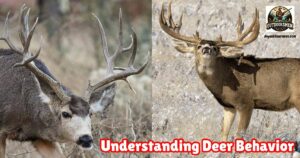
- Complete Guide On Tracking Game Animals
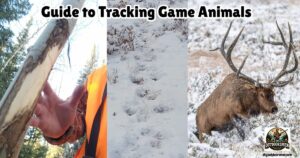
- DIY 4-Step Guide To Field Dressing And Quartering A Deer
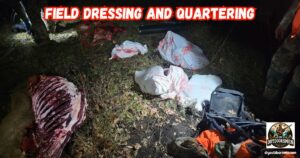
- Night Vision Binoculars For Nocturnal Hunting
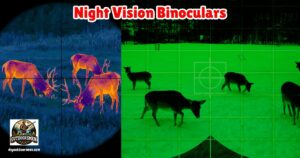
- The Science Behind Camouflage Patterns For Deer Hunting

- Binocular Accessories For Hunters

P.S. Thanks so much for checking out our blog; we really appreciate it. Just so you know, we may receive a commission if you click on some of the links that appear on our site. This helps us keep our content free and up-to-date for everyone. We appreciate your support!
